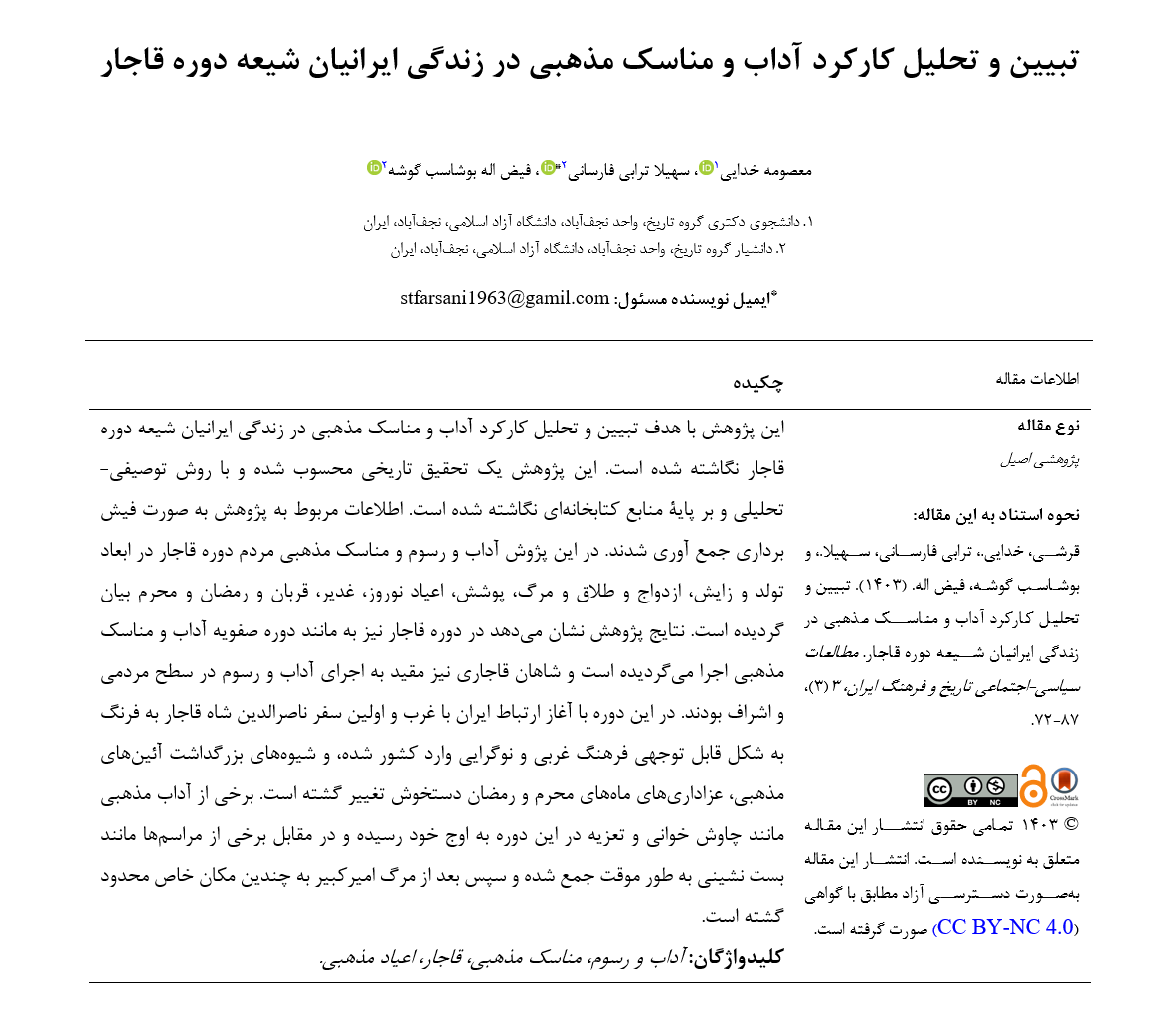Explanation and Analysis of the Function of Religious Rites and Rituals in the Lives of Shia Iranians During the Qajar Period
Keywords:
Customs, Religious Rituals, Qajar, Religious HolidaysAbstract
This study aims to explain and analyze the function of religious rites and rituals in the lives of Shia Iranians during the Qajar period. The research is considered a historical study and has been written using a descriptive-analytical method based on library resources. The information related to the study was collected through note-taking. In this research, the religious customs and rituals of the people during the Qajar period are discussed in various aspects, including birth, marriage, divorce, death, clothing, and the religious holidays of Nowruz, Ghadir, Qorban, Ramadan, and Muharram. The results of the study indicate that, similar to the Safavid era, religious rites and rituals were practiced during the Qajar period, and Qajar kings were also committed to performing customs at both the popular and aristocratic levels. During this period, with the beginning of Iran's contact with the West and Naser al-Din Shah Qajar’s first trip to Europe, Western culture and modernity entered the country significantly, and the methods of celebrating religious ceremonies and mourning during the months of Muharram and Ramadan underwent changes. Some religious customs, such as Chavosh Khani and Taziyeh, reached their peak during this period, while others, such as Bast Neshini, were temporarily discontinued and then limited to specific locations after the death of Amir Kabir.
Downloads








